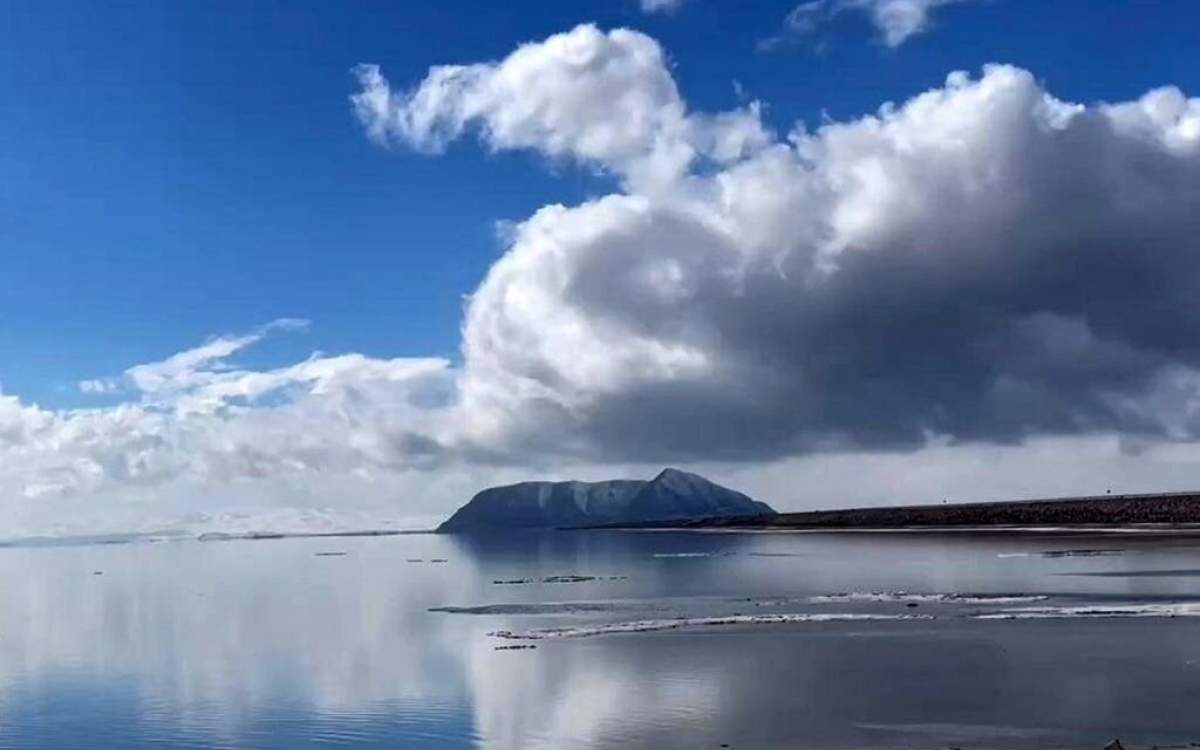The Iran Project
: Thanks to a 43 percent increase in precipitation, the area of Lake Urmia basin has reached 1,500 square kilometers.
Friday 12 April 2024 - 20:39
Story Code : 419410
Source : Tehran Times
Lake Urmia’s area expands to 1500 sq. km
Lake Urmia in the northwestern West Azarbaijan province started to dry up in the 2000s. The lake is the largest in West Asia and the sixth-largest salt lake in the world with a water surface area of 5,000 to 6,000 square kilometers.
The amount of rainfall in West Azarbaijan Province has increased by 27 percent as measured against the long-term average, Motamedian who is also the governor-general of West Azarbaijan province, added.
Since October 2023, 411 cubic meters of water per second have been released from dams to Lake Urmia. Around 50 million cubic meters of water has flowed into the lake so far, he mentioned.
The current water level of Lake Urmia stands at 1270.38 meters, showing an increase of 9 centimeters compared to the same period last year. Since the beginning of the water year in fall 2023, it has increased by 55 centimeters.
The volume of water now exceeds 1.9 billion cubic meters marking a rise of 250 million cubic meters compared to the same period last year.
It has increased by 1.3 billion cubic meters compared to the beginning of the water year in fall 2023.
Lake Urmia’s area expands year on year
Satellite images showed that the area of Lake Urmia measured on February 22 was equal to 2,061 square kilometers which has increased compared to 1,819 square kilometers on March 7, 2023.
Following the recent precipitations across the country and the importance of reviving wetlands and lakes, the country's mapping organization monitored Lake Urmia’s area using satellite images from the Iranian calendar year 1401 (March 2022- March 2023) to 1402 (March 2023-March 2024), ISNA reported.
The southern part of the lake has expanded notably.
Japan-funded FAO project
The Food and Agriculture Organization of the United Nations (FAO), with the support of the government of Japan, identified technical agricultural solutions to increase water efficiency in the agriculture sector at the Lake Urmia basin, which may be efficient in saving the internationally known biosphere reserves.
Since 1995, Lake Urmia has been shrinking due to rapid upstream agricultural expansion and climate change. These forces have pushed the precious lake to the verge of depletion and have put the region’s health, economy, environment, industry, and agriculture at risk.
Despite the efforts of the Lake Urmia Restoration Program National Committee and its focus on the Lake’s restoration since 2013, the continuation of the critical situation demonstrates that sustainability, macro and micro, management solutions should be considered as the main essence of action plans.
In a concerted effort to address the challenges facing the Lake Urmia Basin in 2016, FAO launched the "Integrated Program for Sustainable Water Resources Management in the Lake Urmia Basin,” which was funded by the Government of Japan.
Key technical outcomes of this initiative included the implementation of a water accounting plus project in the Lake Urmia Basin and the identification of water-consuming hotspots within the basin. Notably, water accounting revealed the significant contribution of irrigated and rainfed agriculture to the Lake's total evapotranspiration, emphasizing the importance of water-saving measures for the Lake's restoration.
Reporter : Editorial of The Iran Project
# Tags











